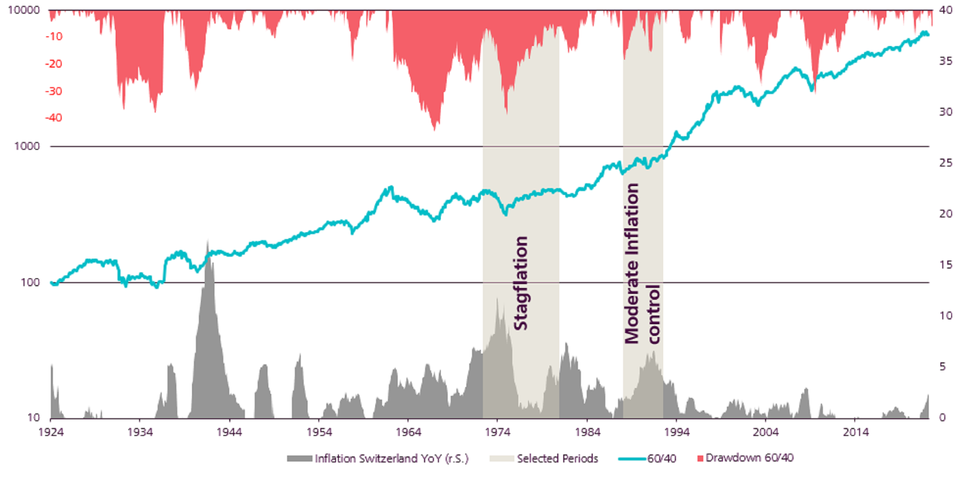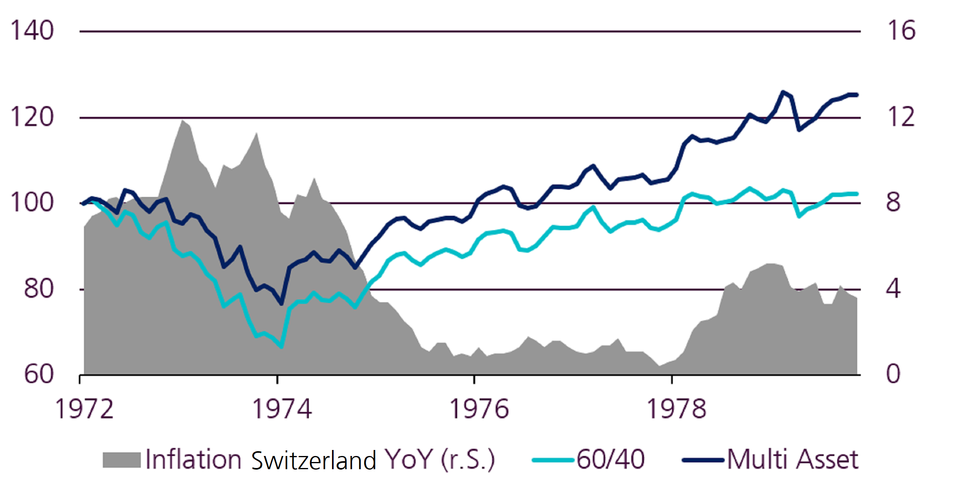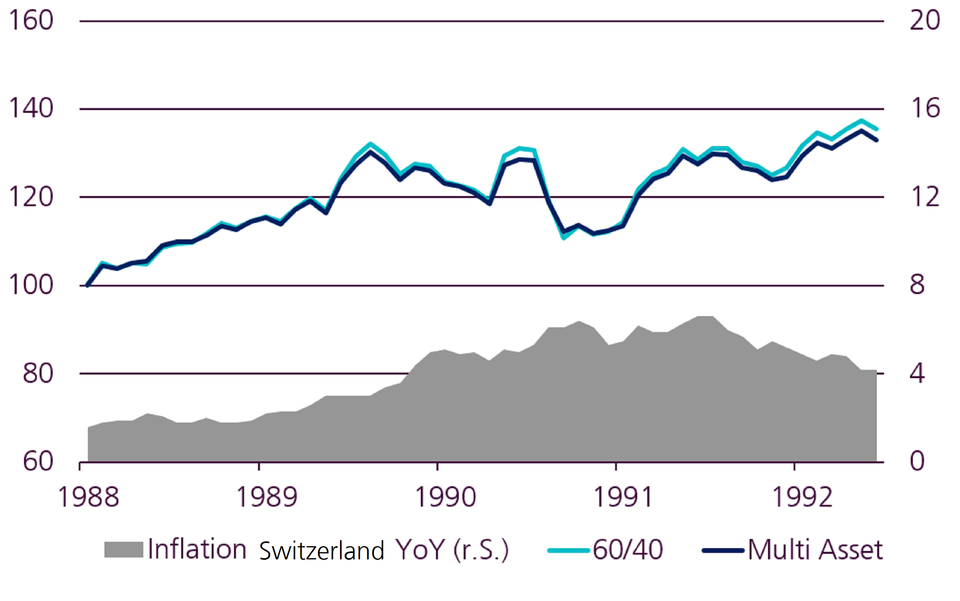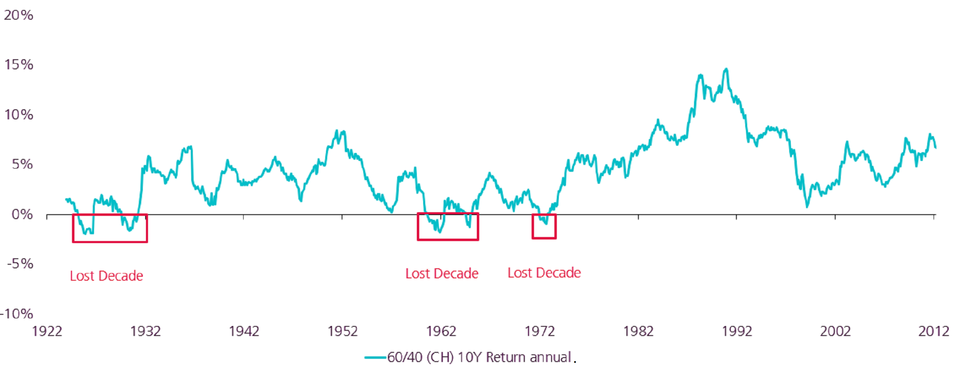Mixed Swiss portfolio during inflation: is there a threat of a «lost decade»?
High inflation brings rising interest rates – with equities and bonds going down together. How does a mixed Swiss portfolio behave during phases like this? Since we have not experienced such high inflation for a long time, an analysis of historical inflation phases may provide clarity and suggest courses of action. We have examined a mixed Swiss portfolio spanning a period of 100 years.
Text: Phil Gschwend

Inflation figures in the USA and the eurozone are currently as high as in the 1970s. In Switzerland, the inflation rate of 2.4% is higher than it has been for 13 years. This relatively moderate rate of domestic inflation by international standards can be explained by the strong Swiss franc, the high proportion of administered prices in Switzerland and the lower dependency on oil and gas imports.
In this blog, we analyse how a Swiss portfolio behaved during periods of high inflation and examine the current environment. To this end, we have formed
- a portfolio of 60% Swiss equities and 40% Swiss bonds (a typical weighting in the USA) and
- a multi-asset portfolio with real assets such as real estate, gold and commodities (each with a 5% weighting) but with fewer equities (55%) and bonds (30%), in each case with unusually long historical time series.
Figure 1: 100 years of the Swiss 60/40 portfolio

Figure 1 shows that in Switzerland, inflation (the grey area) was particularly pronounced at up to 15% during the Second World War. In peaceful times, two phases are especially striking: the 70s and 80s. The value of a mixed portfolio (turquoise line) has not always risen over the last 100 years, as one might think at first glance. Maximum losses (drawdown: red area) of almost 40% were recorded in the mid-60s and 70s. We are focusing on the two (marked) periods in the 70s and late 80s. These phases are characterised by sharply rising inflation rates – as we are also currently experiencing. Can response patterns and courses of action be derived from this basis?
Figure 2: Stagflation in the 1970s (1972-1980)

In the 70s, when two oil price shocks destroyed a lot of wealth, the USA and Switzerland recorded inflation rates of over 10%. In the fight against high inflation rates, the central banks increased interest rates aggressively despite weak economic growth. This led to a deep recession and rising unemployment.
Since both equities and bonds lose value in stagflation, the drawdown of the 60/40 portfolio was enormous at -31%. In addition, it took more than four years for the losses to be recovered. The addition of real assets succeeded in cushioning the high losses of the 60/40 portfolio. The multi-asset portfolio lost around 6% less and was already above pre-crisis levels again within two years.
Figure 3: Moderate inflation in the late 1980s (1988 - 1991)

After Black Monday in 1987, when the Dow Jones collapsed by almost 23% within one day, interest rate hikes also combated the sharp rise in inflation (from 1% to 6% in the USA and Switzerland). In contrast to the 70s, however, inflation did not get out of hand; interest rates were higher at the beginning of monetary tightening than they are today. Tightening therefore remained moderate and growth robust. In the subsequent recession, in the early 90s, central banks cut interest rates early on. The resulting positive yield on bonds limited the drawdown of the 60/40 portfolio to -15.2%. Here too, the losses in the multi-asset portfolio were somewhat smaller thanks to the real assets. |
Figure 4: Rolling 10-year nominal return (annualized) of the Swiss 60/40 portfolio in %.

Staying invested will pay off
Although we find some stagflation risk, we believe we are more in an environment like the late 80s. Inflation may currently remain at a high level for longer than expected due to the war in Ukraine. However, details of the March inflation figures have provided initial indications of falling inflation rates. Growth will slow down in 2022 and 2023, while the basis for growth in the form of high employment, high savings and low debt levels remains healthy. As in the past five decades, we assume that a «lost decade» can also be prevented now. The implication is that staying invested will pay off.
Conclusion
The maximum loss of a mixed portfolio in the 80s was about twice as high as the current losses. We consider a «lost decade» highly unlikely in view of the gradual decline in inflation. A Swiss investor should therefore remain invested and supplement and diversify their portfolio with real assets such as gold, commodities and real estate.


